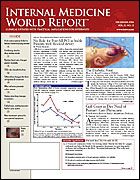Publication
Article
Merck Shares Januvia Safety Data Following fda Decision to Delay Approval of Rival Drug
In response to a recent 3-month extension in the regulatory review period by the FDA for the oral antidiabetes drug vildagliptin (Galvus; Novartis) until the end of February 2007, Merck released the following statement regarding its newly approved dipeptidyl peptidase IV (DPP-4) enzyme inhibitor sitagliptin (Januvia).
Merck Statement on FDA's Three-Month Extension of Review Period for Galvus Nov. 13, 2006
In November 2005, a request for three-month toxicity data with sitagliptin (Januvia?) in monkeys was received from the U.S. Food and Drug Administration (FDA) due to reported findings of dermatologic toxicity (necrotic skin lesions) in monkeys with other DPP-4 inhibitors. In response to this request, Merck initiated a three-month oral toxicity study in monkeys in January 2006. No treatment-related skin lesions were observed in this study in monkeys at any time or at any dose. The complete study report was submitted to the FDA in July of 2006. This report was included in the information reviewed by the FDA that led to the approval of Januvia on October 16, 2006.
In the three-month toxicity study in monkeys, doses of sitagliptin used were up to 100 mg/kg/day, which achieved exposures (AUC0-24hr) and maximal plasma concentrations of drug (Cmax) in monkeys relative to exposures in man treated with sitagliptin 100 mg/day of 28-fold and 41-fold, respectively. At all doses, inhibition of DPP-4 enzyme activity was virtually complete, and at the highest dose tested (100 mg/kg/day, i.e., approximately 41 times the maximum plasma concentration of the recommended dose in humans), sustained inhibition (>90%) was achieved throughout the dosing interval.
A separate three-month toxicity study in monkeys was conducted by Merck with a non-selective DPP-4 inhibitor and was submitted for review by the FDA in August 2006. This non-selective compound demonstrated skin lesions in monkeys.
Because there were no toxicities observed in monkeys at the highest dose tested and there was virtually complete inhibition of plasma DPP-4 activity across all dose groups in the study with sitagliptin (Januvia), it is concluded that the necrotic skin lesions reported to the FDA in monkeys with other DPP-4 inhibitors are unlikely a class effect of inhibition of the target DPP-4 enzyme, but rather due to off-target activity not observed with sitagliptin.
Used with permission from Merck.






